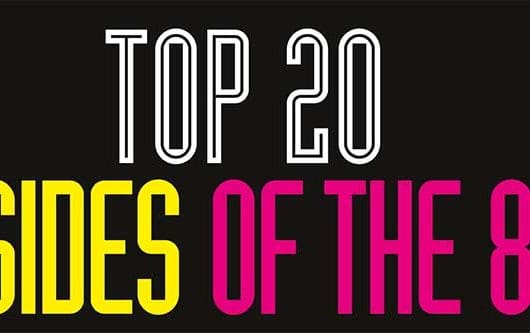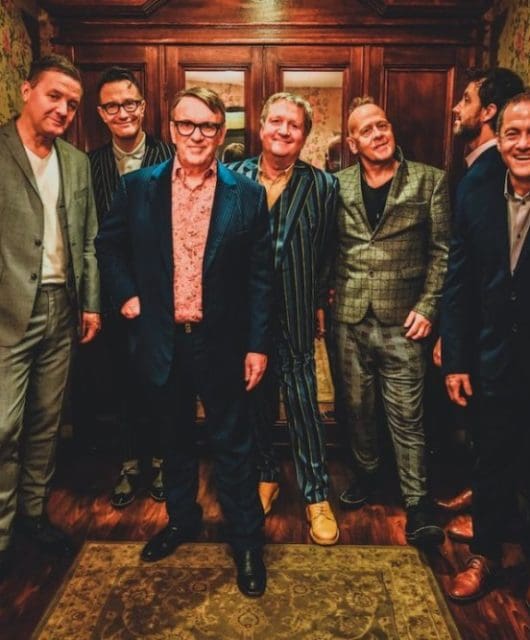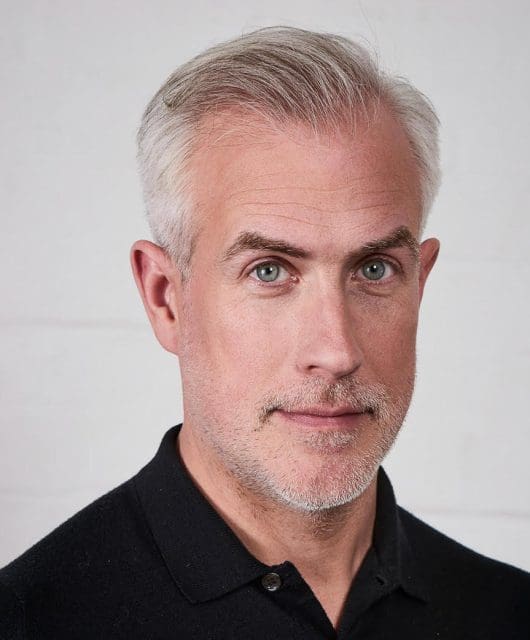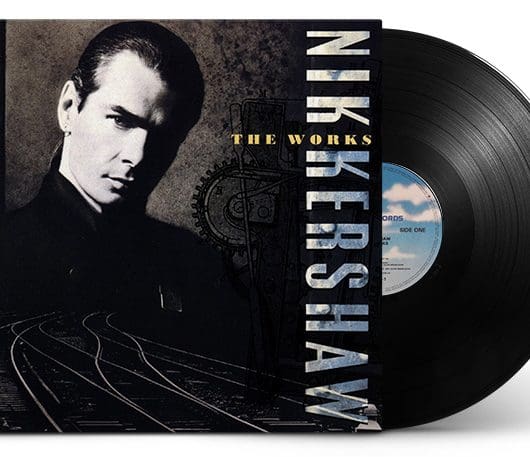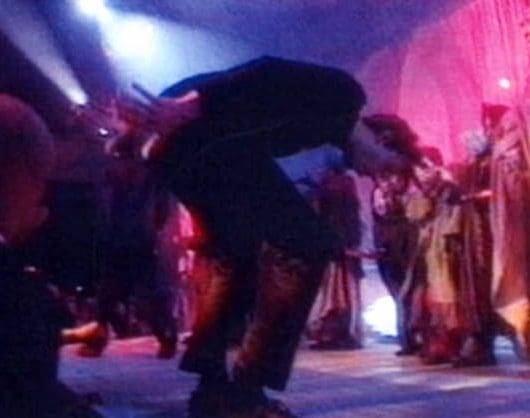Union Street: Vince Clarke’s side projects
By Ian Wade | September 28, 2022
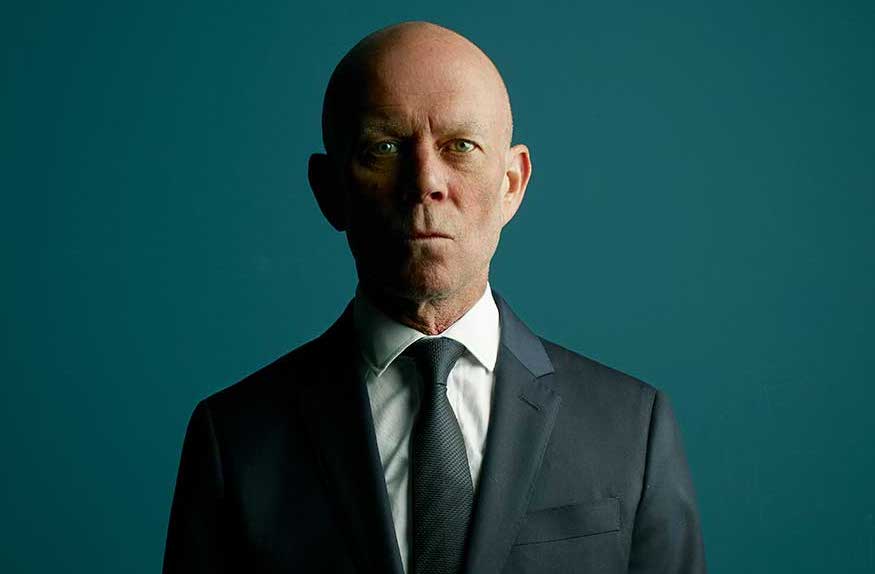
It’s plain to see Vince Clarke is a born collaborator, for throughout his career he has sought to find like-minded souls with whom he can bring his visions to life. Classic Pop jumps into a world of one-off hits and ambient soundscapes – and some unexpected old-skool techno, made with an old friend…
Vince Clarke is not one to let the grass grow long and lush under his feet.
If you add up his main body of work, we get one Depeche Mode album, two with Yazoo, and 19 Erasure studio affairs – and that averages out at approximately one release every other year over four decades of professional existence.
If you then throw in the touring around the world that tends to accompany such activities, you soon begin to understand that being a pop star is something of a job in itself.
Yet even with all that, Vince’s career is still littered with extra work – one-offs, experiments and production jobs.
Although the Yazoo discography was a slim affair, children of the early 1980s may recall TV-am’s attempts to engage with children’s television, and Data Run from 1982 is one of several jingles and themes that Vince and Alison made, alongside The Other Side Of The Tracks, a short-lived Channel 4 pop show presented by Paul Gambaccini.
There’s also the not-entirely cryptically titled Johnson’s Cotton Buds which, according to some deep research, just might have been pitched to Johnson’s Cotton Buds.
After Yazoo, the next project Vince got involved with was with an old chum. Robert Marlow and Clarke went back a long way, growing up alongside each other in Basildon; Marlow was also a member of The Vandals with Alison Moyet.
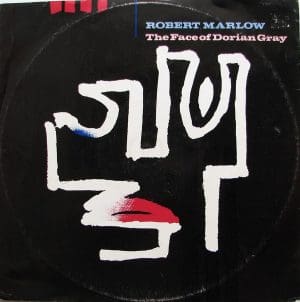
Speaking to the Electricity Club website, it appears that Marlow is almost the great lost Basildon futurist. “I met him when we were eight at the Boys Brigade. We both shared a friendship and a common interest in music.
“Vince was doing more mellow acoustic things and we got together in a band later on called The Plan.
“He played guitar and I bought the first synthesizer in Basildon, an old Korg 700 on hire purchase… it made these really beautiful sounds, and it was then that Vince got into synths and bought one himself.
“He went on to form Composition of Sound, which as we know is the early incarnation of Depeche Mode,” continues Marlow. “For a while we were in two rival bands… he had Composition of Sound, while I had a band called French Look. We both shared the very talented Martin Gore on keyboards!”
In further vaguely incestuous connections, Marlow had been in a band called Film Noir, who’d once supported Depeche Mode, and also featured Perry Bamonte, who would later go on to join The Cure – so, it would appear having Vince in your address book can be quite the advantage.
After the end of Yazoo in 1983, Robert began pestering Vince to let him have some studio time. The result was a single entitled The Face Of Dorian Gray which scaled the dizzy heights of No.83 in the UK charts.
Marlow subsequently released four singles on Vince’s own label at the time, Reset, but alas parent company RCA weren’t wild about releasing the full album, The Peter Pan Effect.
“In many respects I do think RCA at the time thought that they were getting Vince Clarke rather than his record company,” reflects Marlow.
RCA were to be disappointed: Vince’s contract meant he couldn’t be any more than just a helping hand in the studio. The Peter Pan Effect eventually saw the light of day in 1999.
Never say never
Next up in Vince’s collaborative life was The Assembly, a unit formed with sound engineer Eric Radcliffe. Vince had built up a friendship with Radcliffe during the process of recording the two Yazoo albums at Blackwing Studios in Southwark in London.
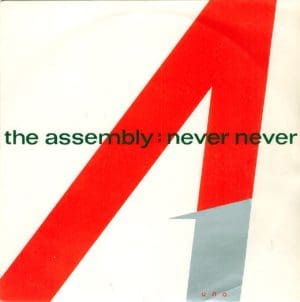
Blackwing had become the key studio for Mute acts, with the likes of Silicon Teens, Fad Gadget and Depeche Mode all passing through, as well as other indie-facing acts including Dead Can Dance, Stereolab, Cocteau Twins, Ride and even My Bloody Valentine (who took the best part of forever to record their legendary 1991 album Loveless there).
When first announced in August 1983, The Assembly was planned to be a group with a host of guest musicians and had an album pencilled in for early 1984.
Speaking about it, Vince suggested that if a singer didn’t like one song, they’d simply pitch it to another.
The first single, Never Never, featured then ex-Undertones vocalist Feargal Sharkey, who was then embarking on a solo career; his involvement came via a cheeky rumour in a gossip column of Number One magazine, where he’d answered someone who’d asked what he was up to by saying “working with Vince Clarke!”
Soon, this titbit got back to Vince, and he actually invited Feargal along to get involved. As a classic one-hit-wonder, there’s not really much to say about it other than it reached No.4 in the UK chart, and Feargal offered up the helpful and correct statement “Mr Vincent Clarke is a God” when asked about it on Twitter by Classic Pop.
And if you want a niche pub quiz-type fact, it was one of two songs that appeared on the first Now That’s What I Call Music video compilation in 1983 (along with Freeez’s IOU) but that didn’t turn up on the album.
Speaking at the time when The Assembly was looking to be a going concern, Eric Radcliffe suggested “We’re not committed to doing a certain number of things, which is good because it lets us work on whatever we want to at the time.”
After Never Never, the planned follow-up was to feature Neil Arthur from Blancmange, and there were even hints that Alison Moyet was to be another contributor.
Songs were being compiled towards an Assembly album, but Vince remained guarded about the singers’ exact identities, offering only the vaguest hint – “10 tracks, 10 people”.
- Read more: Top 40 Vince Clarke songs
- Read more: Pop Art – Vince Clarke
However, decades years later, there’s been no suggestion that much else got done on The Assembly. Vince revealed that the band was no more during interviews with Paul Quinn a couple of years later; “It was too difficult… we spent most of last year just farting about in the studio, waiting for people to turn up.
“We started an LP, but the producer we wanted didn’t show up for eight months. In the end, we just decided to go home and call it a day.”
In 1997, Eric Radcliffe looked back on his time with Vince. “I count myself fortunate and privileged to have worked with such a talented team,” he praised.
“I remember that we had to build a studio in my house to complete the recording of Upstairs At Eric’s because Blackwing Studios was fully booked. My mother provided us all with her famous egg and chips, and also appeared on the record. Wonderful days!”
The company you keep
After The Assembly dissolved, Vince teamed up with Neil Arthur and Stephen Luscombe, aka Blancmange, and with percussionist and composer Pandit Dinesh and legendary Indian playback singer Asha Bhosle.
The group, entitled West India Company, released a four-track self-titled EP in 1984.
The EP was very much an extension of the fusion that Blancmange were approaching with their music, such as the hit Living On The Ceiling – which Dinesh had played on – while the EP’s lead track, a version of Ave Maria, has since gone on to be a floorfiller for the likes of Horse Meat Disco.
Vince’s contribution is listed, slightly mysteriously, as ‘pyrotechnics’.
Another behind-the-scenes hook-up was with the synth duo Twilight, who were actually future Erasure tour manager Andrew Mansi and Nitzer Ebb tour manager Steev Toth.
Vince produced what turned out to be the duo’s only single, Just Me Alone, which was released on Polydor in 1985.
Vince’s next collaboration came later in 1985 – a song with Scottish singer Paul Quinn, who had previously been in the highly-touted group Bourgie Bourgie as well as post-punk effort The Jazzateers, who were signed to legendary Scottish label Postcard (the year before, Quinn had recorded a cover of the Velvet Underground’s Pale Blue Eyes with schoolfriend, Postcard luminary and Orange Juice frontman Edwyn Collins).
Paul and Vince had met via producer Flood, who’d suggested the two should meet after sessions with an unnamed reggae singer proved fruitless.
“The main reason I wanted to do this was because I’d done nothing for so long, and I was starting to get bored,” Vince informed Record Mirror. “Last year [1984] was a miserable year.”
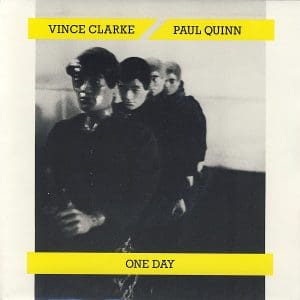
The song was One Day, and for Paul Quinn the project improved as it went along. “At first I thought the song was a bit too low-key, but the more I hear it the better it sounds,” he considered.
“Even after I’d gone in and sung it for the first time, I didn’t think too much of it. But it worked out well, so I decided to do the single.”
In truth, the Clarke/Quinn connection was never deemed to be a long-term plan for either party, as Vince had also mentioned during interviews at the time that he’d got a new album in the works “with a new singer called Andy Bell… we’re co-writing, and it’s working out really well”, while Quinn was engaged in recording a solo album.
Upon its release in June 1985 One Day managed, technically, to reach the UK Top 100 (it stalled at No.99). Still, the reviews were nice, and the release fared better in the indie charts, becoming a genuine Top 10 hit.
Vince took a bit of time away from side projects and one-offs for a few years, mainly due to the fact that he was busy engaged in making Erasure one of the biggest pop groups of the era – it’s understandable, really.
For the next 10 years he devoted himself to working with Bell, the one exception being a 1995 excursion in which he followed in the illustrious lineage of C.C.S., Paul Hardcastle and Phil Lynott & Midge Ure, by recording a theme to Top Of The Pops.
Entitled Red Hot Pop, it was featured on the show between 1995 and 1997, although unlike the others, it was not released as a single in its own right.
Other dimensions
In 1999, a decade or so after Vince last worked outside Erasure, he teamed up with Heaven 17/Human League founder Martyn Ware.
The two of them had previously worked together when Martyn had produced Erasure’s 1994 album I Say I Say I Say, and the duo got back together in 1999 when Ware invited Vince to work with him on a sound installation for Sheffield’s ill-fated Museum of Popular Music.
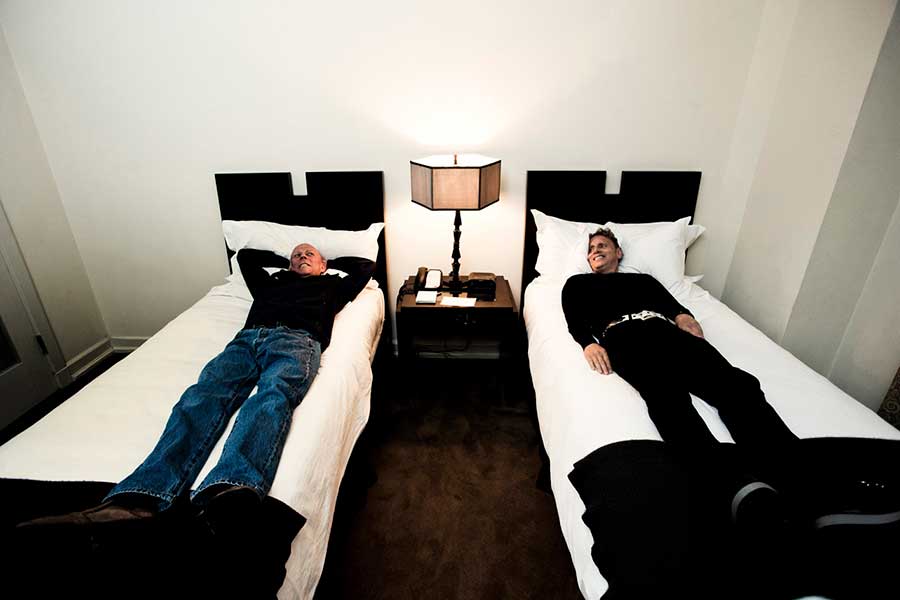
They created the 14-minute Music For Multiple Dimensions and then broadened that into an album called Pretentious, billed as The Clarke and Ware Experiment.
The duo worked on a handful of other projects, such as 2001’s ambient noodler Spectrum Pursuit Vehicle, which started life as an installation for London venue The Roundhouse, and formed Illustrious Company as a vehicle to work on soundtracks and commissioned 3D soundscapes.
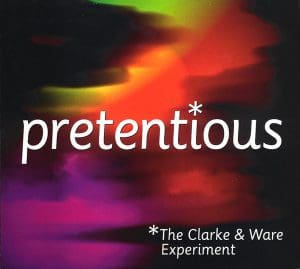 Family Fantastic, meanwhile, was a band project formed in 2000 by Vince and Phil Creswick, who had been in PWL pop gonks Big Fun.
Family Fantastic, meanwhile, was a band project formed in 2000 by Vince and Phil Creswick, who had been in PWL pop gonks Big Fun.
This was an outfit which featured various singers chipping in to create a fusion of retro funk, disco and lounge, all underpinned by the unique Vince Clarke sound.
While there’s not an awful lot about the project to be found – bar some slightly alarming photos of the band all kitted out in 70s garb – they did make two albums, 2000’s Nice! and 2008’s Wonderful, and also contributed to the soundtrack of the Mary & Kate Olsen film Winning London in 2001.
Family Fantastic were last seen – minus Vince – attempting to represent the UK at Eurovision in 2007 with You Are The Melody. Various iterations of the band’s catalogue are out there, depending on how much you want to spend as a completist.
Vince and Creswick were also listed as part of The Radioactivators, who issued a sole single – a rockabilly-inspired double A-side single called Knockin’ On Your Door/Bopp, which can also be found on the Winning London soundtrack.
Friends united
During the 2000s Vince provided additional music for an episode of Johnny Bravo in 2004 entitled The Time Of My Life, which was a collaboration with The Psychedelic Furs’ Richard Butler. He also supplied the song Let’s Get Together to female group Girl Authority for their second album, Road Trip.
The tune had originally been intended for Depeche Mode back in the days of yore but was never recorded by them. Clarke also co-wrote What Do I Want From You? with Freeform Five for their album Strangest Things in 2005.
In 2012, a project arrived that no one, – not even the biggest fans of either party – could have foreseen when Vince contacted Martin Gore with a view to create a few tracks. The results of the duo’s reunion were released under the collective title VCMG (named, of course, after their initials).
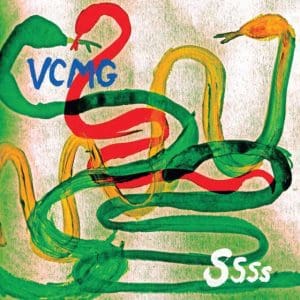
A couple of EPs and the album Ssss were well received; this particular journalist used the BBC to claim that “The elements are all here: Vince’s knack for slight but perfectly pop melodies and Martin’s strident anthemic blasts are easily noticeable.
There really is no sign of a duff moment at all”. Much like the Yazoo reunion in 2008, it had a nice feeling of friends being reunited.
In 2012 Vince also collaborated on a cover of the Depeche Mode song Fly On The Windscreen with Norwegian singer Ane Brun “on vocals and kazoo”, as he drolly tweeted when he announced it. The song was used in a trailer for the novel The Blessed by Tonya Hurley.
Another one-off production for Vince around this time was his work for the English synth-pop turn The Good Natured – who went on to become Lovestarrs and are now just a solo act called Sazzie – on their single Ghost Train in 2012; the song was released as a free download.
Vince also nabbed some production credits on some tracks by Toronto-based act Electric Youth in 2014.
In 2013, Vince collaborated with moody synth-wave duo All Hail The Silence, who are an electronic music duo comprising American electronic musician BT and English singer-songwriter Christian Burns. Vince remixed their 2019 song The Fall, and the duo also supported Erasure on their 2014 tour.
As part of ambitious collaboration project in 2015, French music legend Jean-Michel Jarre released an album that found him working with other artists.
Jarre contacted people he admired “for their singular contribution to our genre” and then composed and produced original demos specifically for each one; the chosen ones were then invited to “bring their unique spirit and signature” to the recordings, before Jarre himself completed them.
Among a variety of people – including Air, Fuck Buttons, Massive Attack and M83 – Jarre called upon the services of Vince, who worked with him on the track Automatic.
According to Vince, “Jean-Michel got in touch with my manager, and said that he would be coming around to visit and talk about the project. He’s so famous and so legendary! It was quite surreal and I was really nervous…”
 Vince took another departure from the day job in 2016 when he hooked up with Paul Hartnoll, aka one half of Orbital.
Vince took another departure from the day job in 2016 when he hooked up with Paul Hartnoll, aka one half of Orbital.
Released on Vince’s label Very Records, the album 2Square came about when the pair were introduced to each other by their mutual friend and tour technician.
According to Paul, “Vince had come up with this basic plot of what he wanted to do with a more dance-orientated album, and he was a bit puzzled – he wanted someone else to help join in to finish it and do something else with it, and he was talking with Howard and asking who he could finish it with, and Howard thought of me straight away.”
Described, perhaps tongue-in-cheek-ly, as ‘dad dance’, 2Square took the rave dynamics of Orbital and applied them to Vince’s songwriting chops.
“Yes, he’s one of these artists who has got the Vince Clarke sound that you just can’t miss,” Hartnoll points out. “You know when you’re hearing a Vince Clarke track which is really typical and great… and as soon as I put the new Erasure album on when I was holiday, it just makes you smile. ‘Ah, there he is!’”
And finally, in an ongoing spoken-word collaboration, since 2017 Vince has co-hosted a fortnightly affair called The Synthesizer Show with composer Reed Hays on Maker Park Radio, a non-profit community streaming radio station based in New York.
The first episode aired December 20, 2017, and each show sees the pair celebrating all sorts of synth-based music, from old wonky soundtracks (Forbidden Planet, A Clockwork Orange) to a bunch of classics (Human League, Yello, Cerrone, John Foxx), new acts (Blood Everywhere, Ela Minus) and turns from his label (Alka, Brook) that tickle his fancy.


